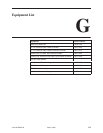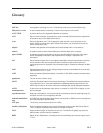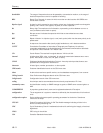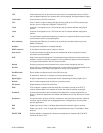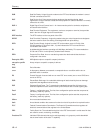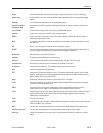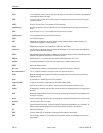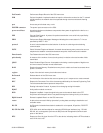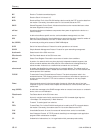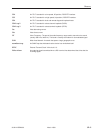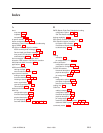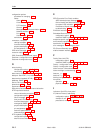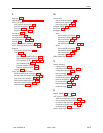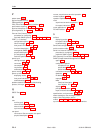
Glossary
GL-7
3162-A2-GB20-30
March 1999
Performance Report Branch of the CSU menu tree.
Payload Loopback. Loopback mode that loops the information received on the T1 network
interface back to the network after it has passed through receive and transmit framing
section.
An access point for data entry or exit.
The power input connector on the CSU.
A test that checks most hardware components when power is applied to the device or a
reset is initiated.
Point-to-Point Protocol. A protocol for packet transmission over serial links, specified by
Internet RFC 1661.
Performance Report Messages. Messages indicating the current state of a T1 line as
specified by ANSI-T1-403.
A set of rules that determines the behavior of devices in achieving and maintaining
communication.
Public Switched Telephone Network. A network shared among many users who can use
telephones to establish connections between two points. Also known as dial network.
Test Patterns branch of the CSU menu tree.
A measure of the number of ones (marks, pulses) in relation to the total number of bits
transmitted.
Quasi-Random Signal Source. A test pattern simulating a random pattern of digital ones
and zeros used to simulate normal transmission.
Random-Access Memory. Read/write memory that is volatile and loses its contents when
power is removed.
A part of the device’s memory that holds stored values.
Release branch of the CSU menu tree.
An initialization of the device that occurs at power-up or in response to a reset command.
Request for Comments. One of the documents published by the Internet Engineering Task
Force that describe Internet protocols and policies.
Routing Information Protocol. A protocol for exchanging routing information.
An 8-position modular connector.
Repeater LoopBack. Loops the signal being sent to the network back to the DTE
Drop/Insert and data ports after it has passed through the framing circuitry of the device.
Remote Loopback Branch on the CSU menu tree.
A device that connects LANs by dynamically routing data according to destination and
available routes.
An Electronic Industries Association’s standard for a low-speed, 25-position, DCE/DTE
interface.
RFC 1659, which defines objects for managing RS-232-type interfaces (e.g., RS-422,
RS-423, etc.) and supports synchronous data ports and management communication
ports on the device.
Request to Send. A signal from the DTE to the device, indicating that the DTE has data to
send. V.24 circuit 105.
Perf branch
PLB
port
POWER connector
power-on self-test
PPP
PRM
protocol
PSTN
Ptrns branch
pulse density
QRSS
RAM
register
Rel branch
reset
RFC
RIP
RJ48C
RLB
Rlpbk branch
router
RS-232
RS-232-like MIB
RTS



